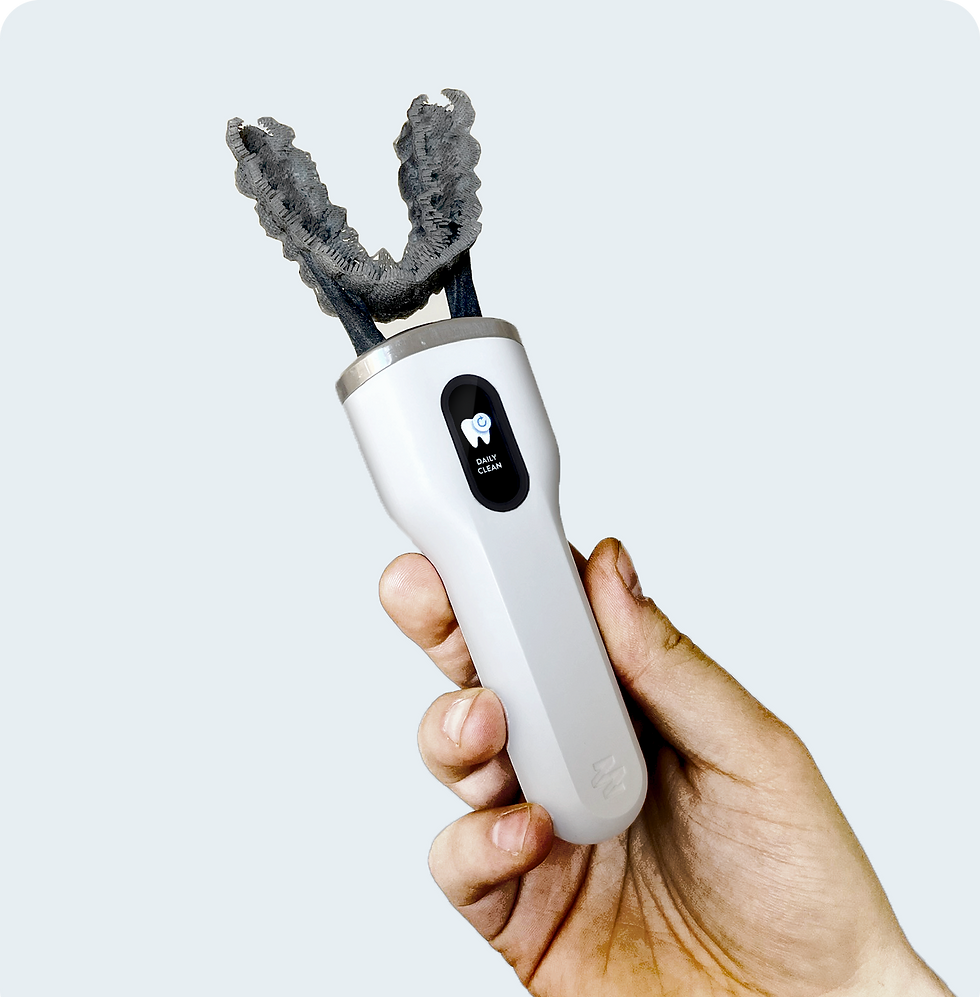What Causes Gum Recession? A San Diego Dentist Explains
- Nidhi Pai, DDS
- Aug 8
- 3 min read

Gum recession—also known as gingival recession—happens when the soft tissue around your teeth begins to wear away, exposing the roots. While it often starts subtly, it can lead to major issues like sensitivity, bone loss, decay, and even tooth loss.
According to Del Mar cosmetic dentist Dr. Nidhi Pai, many people seek help for receding gums after it has already impacted their smile or caused damage.
“Patients come in saying they hate the way their gums look or feel. But what most don’t realize is that gum recession is a symptom, not a root cause. Unless we fix the reason behind it, it will keep coming back.”
Top Causes of Gum Recession (Backed by Dental Research)
If you are noticing longer-looking teeth or increased sensitivity, the cause may be one of the following:
Periodontal Disease (Gum Infection): Gum disease is the leading cause of gum recession. It starts as gingivitis and, if untreated, progresses into periodontitis, where bacteria destroy the bone and tissue holding your teeth in place.
Plaque & Tartar Buildup: When plaque hardens into tartar below the gumline, it creates inflammation that slowly erodes gum tissue.
Aggressive Brushing: Brushing too hard, or using medium- or hard-bristled toothbrushes, can wear away gum tissue over time.
Tooth Grinding or Clenching (Bruxism): Constant grinding puts unnatural pressure on the gumline, especially at night, leading to gum trauma and recession.
Tooth Misalignment or Orthodontic Stress: When teeth are positioned outside the bone envelope, thin gums cannot support them properly, often resulting in recession.
Poor Oral Hygiene Technique: Flossing too aggressively or using improper tools can damage delicate gum tissue.
Tobacco Use: Smoking or chewing tobacco interferes with blood flow to the gums, making them more susceptible to disease and recession.
Aging or Thin Gum Biotype: Some people are born with thin, fragile gums that naturally recede faster over time. Gum recession is also more common with age.
Dr. Pai's Approach: Why Traditional Treatments Often Fail
After years of performing gum grafts—including surgeries that transplant tissue from the palate to cover the exposed root—Dr. Pai noticed a troubling pattern:
“Six months later, the recession was back. Because no one had addressed the why.”
If a patient continues using the wrong toothbrush, brushing too hard, or failing to clean beneath the gumline, the problem returns. This is what motivated Dr. Pai to co-develop ZERObrush, a fully customized full-mouth cleaning system that helps prevent recession at home—without aggressive brushing or guesswork.

Gum Recession Treatment and Preventative Dentistry in San Diego: Our Approach
At Smiles by Pai, treatment begins with diagnosis. Using 3D scans and high-resolution imaging, Dr. Pai evaluates:
The condition of your gum tissue
Bite and jaw alignment
Brushing technique and oral care routine
Underlying inflammation or infection
From there, treatment may include:
Deep cleanings or Guided Biofilm Therapy (GBT)
Behavior or technique correction
Switching to soft-bristled brushes and non-abrasive pastes
ZERObrush recommendations for at-home care
Referral to a periodontist if surgical grafting is necessary
“Receding gums can be slowed—and sometimes even stabilized—when we act early and intentionally.”
Gum Recession Isn't Just About Your Smile. It's About Your Health.
Whether you are experiencing sensitivity, cosmetic concerns, or just want to prevent long-term damage, Dr. Nidhi Pai offers a holistic, tech-forward approach to gum recession treatment in San Diego.
📍 Smiles by Pai – Cosmetic & Preventative Dentistry in Del Mar
📞 (858) 252-4622



Comments